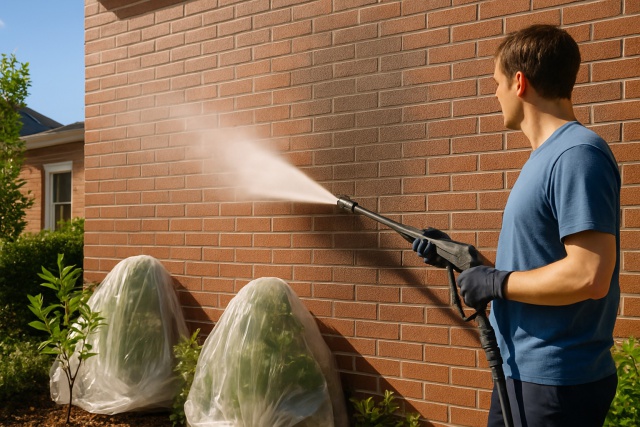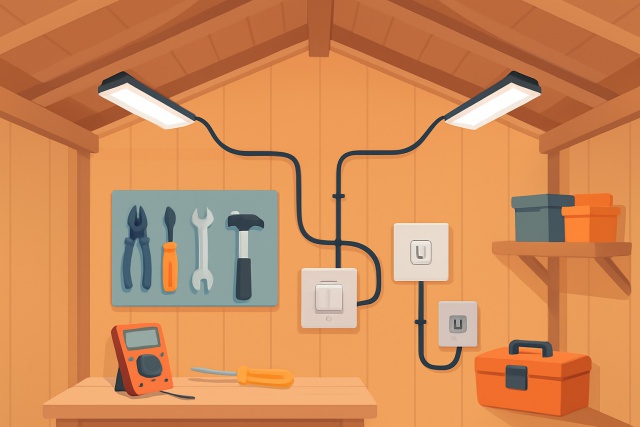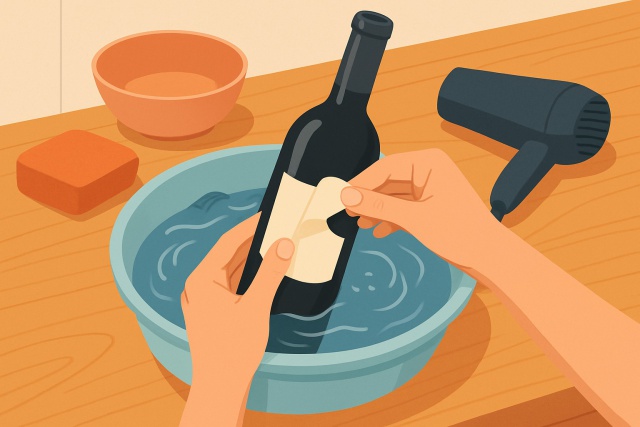
Rust On Stainless Steel Sink - How To Remove It Safely
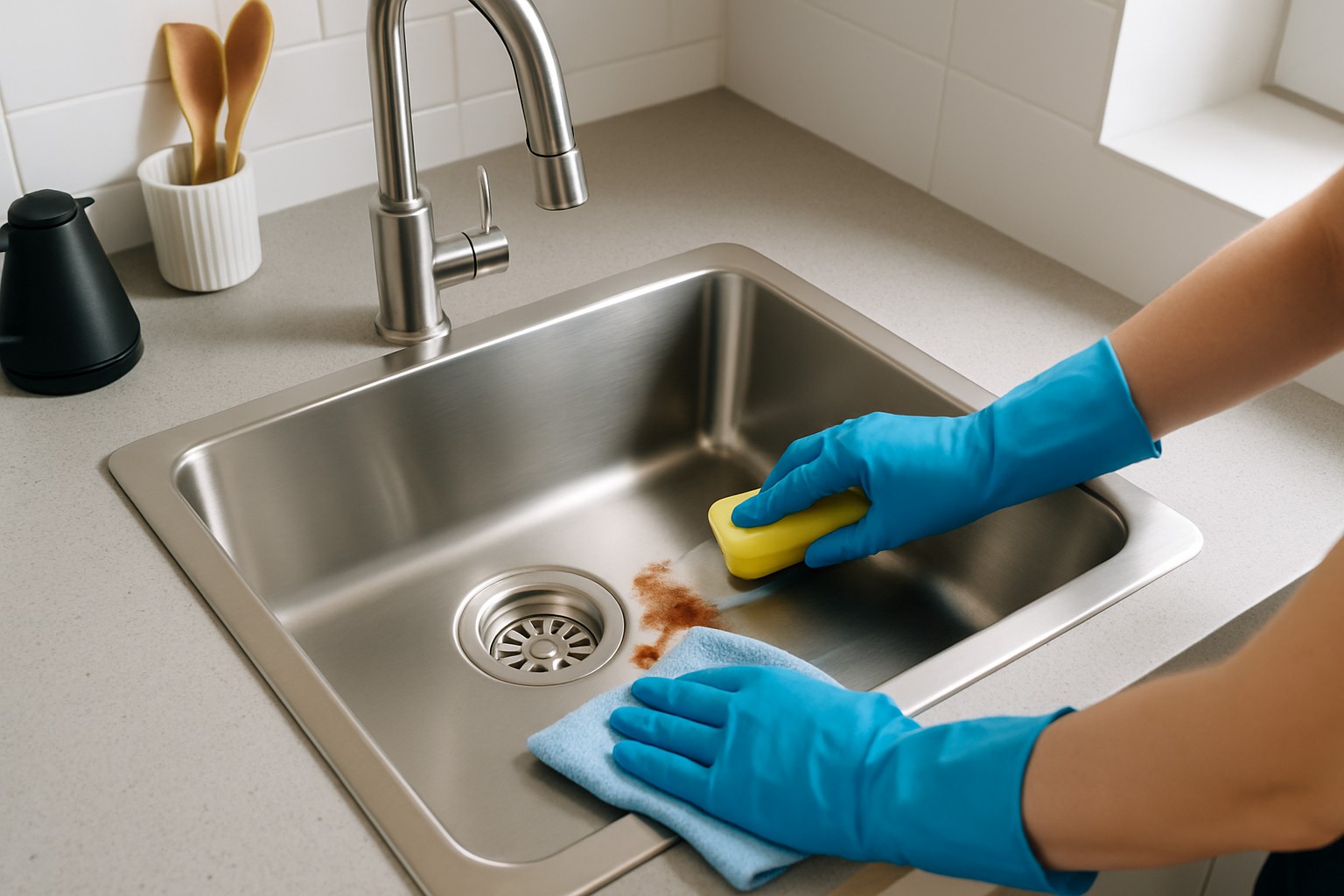
Rust showing up on a stainless steel sink can catch you off guard since stainless steel is supposed to shrug off corrosion. Rust spots do pop up now and then, much to everyone's annoyance.
Why on Earth Does Rust Show Up on Stainless Steel Sinks?
Despite what the name might trick you into thinking, stainless steel is not completely rust-proof. Rust sneaks in when the chromium oxide layer on its surface gets nicked or tampered with. Whether iron particles hitch a ride from utensils, harsh chemicals do their worst, or tiny scratches you barely notice, these offenders start the oxidation process.
- Tiny iron particles from steel wool or metal utensils can lodge into the sink’s surface and kick off rust.
- Letting water hang around on the sink without drying usually causes moisture buildup and speeds up corrosion.
- Harsh chemicals like bleach or acidic cleaners don’t just clean; they wear down the sink’s chromium oxide shield and expose it to rust.
- Scratches or abrasions break the smooth protective finish and create tiny doorways where oxidation starts.
How to Tell Rust Stains Apart from Other Marks on Your Sink (Without Losing Your Mind)
Not every discoloration on your stainless steel sink is rust, believe it or not. Knowing how to tell rust apart from hard water stains and mineral deposits can save you quite a bit of hassle when deciding on the best way to clean it. Rust tends to give away its presence with pretty obvious signs, which thankfully makes it easier to spot.
- Rust stains usually pop up with that unmistakable reddish-brown hue and often have a flaky texture that you can’t miss.
- These spots tend to feel rough or grainy to the touch, making them stand out compared to those smoother mineral buildups.
- You’ll often notice rust spots appear patchy and uneven, whereas hard water stains like to spread out more evenly over larger parts of the sink.
Getting Ready to Remove Rust with Essential Tools and Safety Tips You Will not Want to Skip
Before you dive into removing rust from your stainless steel sink, make sure you’ve got the right tools and materials lined up. Trying to wing it never ends well. It’s equally important to don some protective gloves and eye protection—nothing ruins your day faster than a splash of harsh cleaner where it shouldn’t be.
- Soft sponges or non-abrasive scrubbing pads that help you avoid scratching the surface
- Mild abrasive cleaners designed for stainless steel, perfect for giving it a little extra shine without going overboard
- White vinegar, a trusty natural acidic solution that does a surprisingly good job tackling rust without any fuss
- Baking soda, a handy ingredient for whipping up gentle scrubbing pastes that get the job done without being harsh
- Fresh lemon juice, bringing natural acidity and a knack for cutting through grease like a pro
- Protective gloves to keep your hands safe and happy during the whole cleaning adventure
- Soft microfiber cloths, ideal for wiping down and polishing to a streak-free gleam
Avoid abrasive steel wool or wire brushes because they tend to dig in and scratch the surface more deeply, giving rust an open invitation to settle in and spread. Also, steer clear of harsh chemical rust removers that are not designed specifically for stainless steel since these can nibble away at the protective chromium oxide layer. This might cause lasting damage and speed up rusting later on.
A Straightforward Guide to Safely Bidding Farewell to Rust on Your Stainless Steel Sink
Removing rust from a stainless steel sink definitely takes a bit of patience and a gentle touch. It’s usually best to begin with natural household remedies before reaching for those commercial products. This approach often helps safeguard your sink’s shiny finish while still tackling those pesky rust spots head-on.
Start by giving your stainless steel sink a good rinse with water then dry it thoroughly using a microfiber cloth. Leaving any moisture behind is just asking for trouble.
Next, douse the rust spots with white vinegar or fresh lemon juice making sure they’re fully covered like a cozy little blanket.
Let that acidic magic sit and work its charm for about 10 to 15 minutes to help break down the stubborn rust.
Now gently scrub the rusty patches with a non-abrasive sponge or scrubbing pad, always following the grain of the steel. This isn’t the time to get too rough.
Rinse the sink well with water and dry it off with a soft cloth to dodge any pesky water spots.
If the rust is playing hard to get, mix baking soda with enough water to create a thick paste. Slather it on, give it about 15 minutes to settle in then gently scrub away.
Should the rust still linger like an unwelcome guest you might want to try a commercial rust remover designed specifically for stainless steel. Just be sure to follow the safety guidelines. Better safe than sorry.
When you’re all done, rinse thoroughly and dry the sink completely to keep moisture from sneaking back in and causing more headaches.
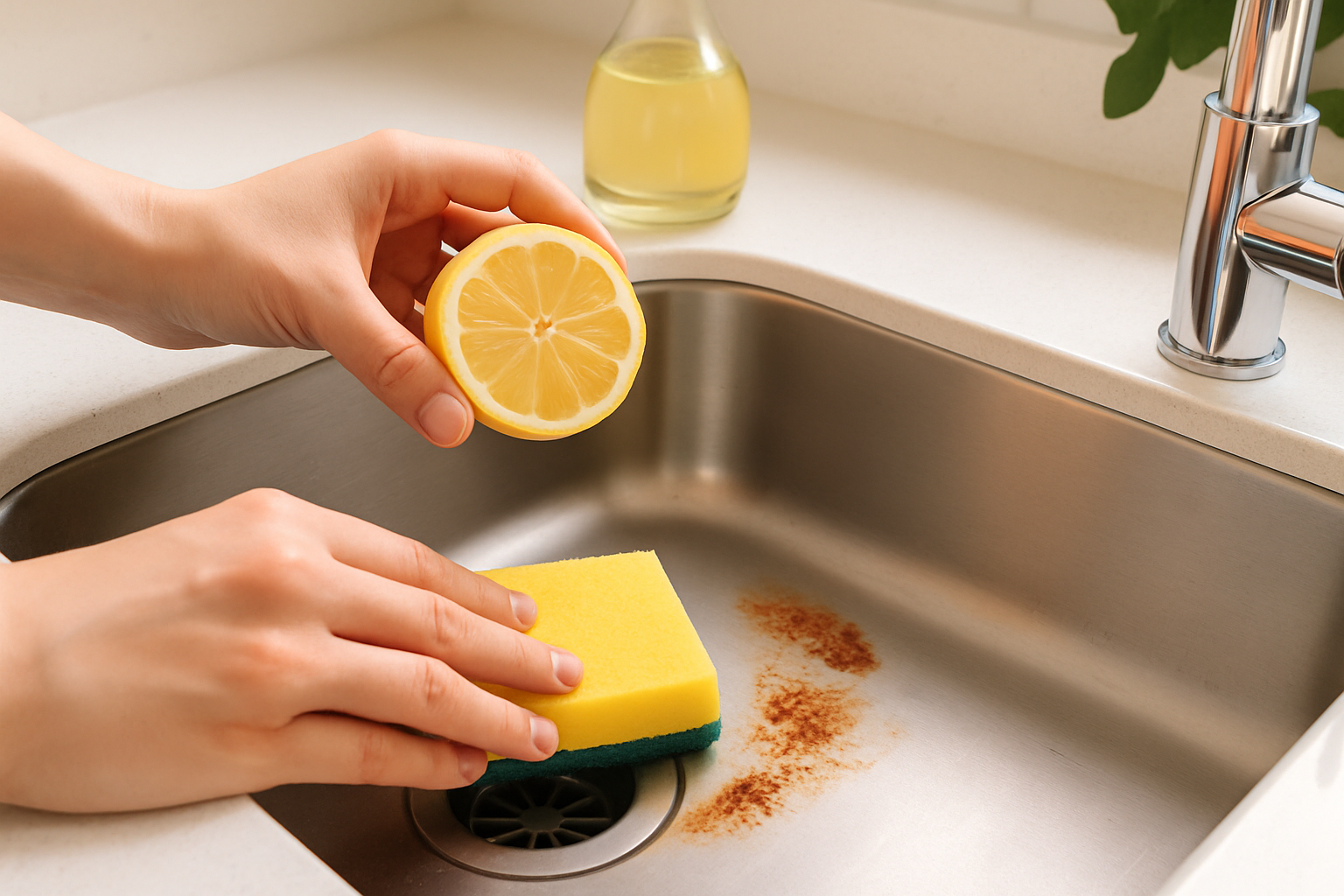
Other Commercial Products You Can Try to Tackle Rust
If homemade remedies don’t quite do the trick in banishing rust from your stainless steel sink there are commercial rust removers made to be both safe and effective. Choosing the right one is a balancing act that involves ease of use, safety and how well it tackles stubborn rust.
| Product Name | Active Ingredients | Ease of Use | Safety Rating | Ideal Use Case |
|---|---|---|---|---|
| Bar Keepers Friend | Oxalic Acid | Fairly easy | High | Great for knocking out light rust and mineral buildup without much fuss |
| CLR Calcium, Lime & Rust | Chelating agents | Simple | Moderate | Perfect when you are up against stubborn rust around sink fixtures |
| Iron OUT Rust Stain Remover | Sodium bisulfate | Fairly easy | Moderate | A solid pick for tackling those deep rust stains on stainless steel |
| Weiman Stainless Steel Cleaner | Surfactants & mild acid | Simple | High | Ideal for your routine cleaning and keeping light rust at bay |
| Evapo-Rust Rust Remover | Chelating agents | Simple | High | Best for those tough rust spots where steel wool just won’t cut it |
| Zep Rust Stain Remover | Phosphoric acid, surfactants | Fairly easy | Moderate | Suited for heavier-duty, commercial-grade rust removal tasks |
How to Keep Rust from Sneaking Up on Your Stainless Steel Sinks
The best way to keep your stainless steel sink rust-free and looking fresh is prevention. If you stay on top of regular maintenance and pick the right cleaning methods while keeping moisture in check, you’ll go a long way toward dodging rust.
- Always make sure to dry your stainless steel sink thoroughly after each use to prevent moisture from causing issues.
- Avoid using steel wool or wire brushes because they often leave behind particles that cause rusty spots.
- Clean your sink regularly with mild non-abrasive detergents made for stainless steel as this makes a difference.
- Occasionally apply a protective coating or polish to keep the chromium oxide layer healthy and shiny.
- Stay away from harsh chemical cleaners like bleach since they may seem strong but can damage your sink's finish faster than you think.
- If you notice any iron or steel particles on the surface, wipe them away immediately to prevent rust developing underneath.
When Rust Damage Means It is Time to Call in the Pros for Repair or Replacement
Rust on a stainless steel sink has a sneaky way of sneaking past just surface stains, often leading to corrosion that messes with both the structure and appearance. Figuring out when the rust damage has gone beyond your DIY reach is key
- Visible corrosion pits or holes that punch right through the sink’s surface usually signal serious rust trouble underneath.
- If the sink feels wobbly, weak or even a bit warped, it’s a safe bet you’ll want a pro to give it a thorough once-over.
- Rust spots that stubbornly refuse to budge no matter how much elbow grease you put in often spell out that the material beneath is quietly breaking down.
- Any leaks or cracks popping up around the basin or drain are a red flag you shouldn’t ignore. It’s best to have a professional check them out sooner rather than later.
Driven by a passion for culinary history, this food writer explores how ancient cooking techniques and forgotten ingredients can revolutionize modern home kitchens.
Read Pages

